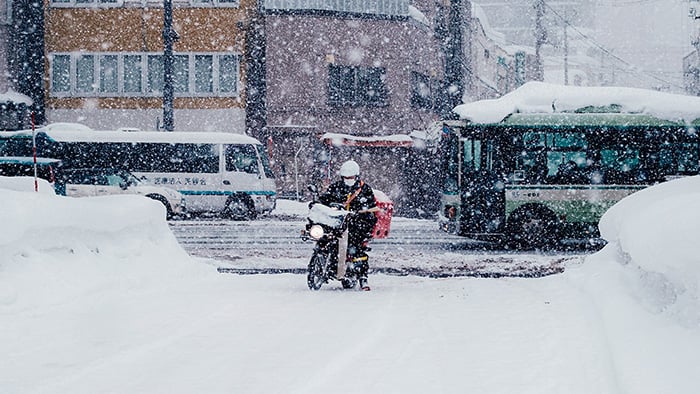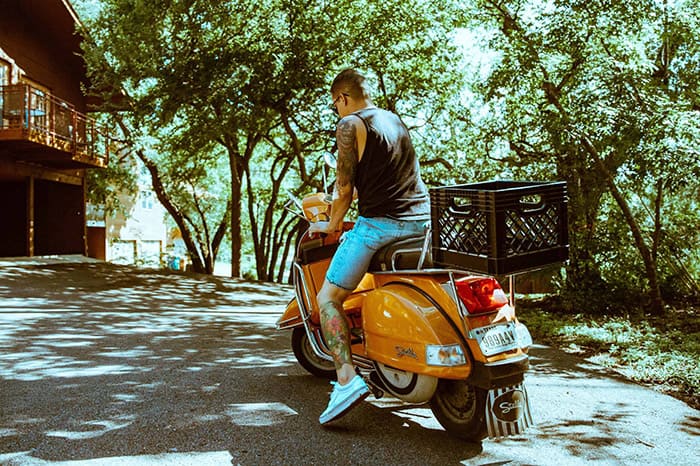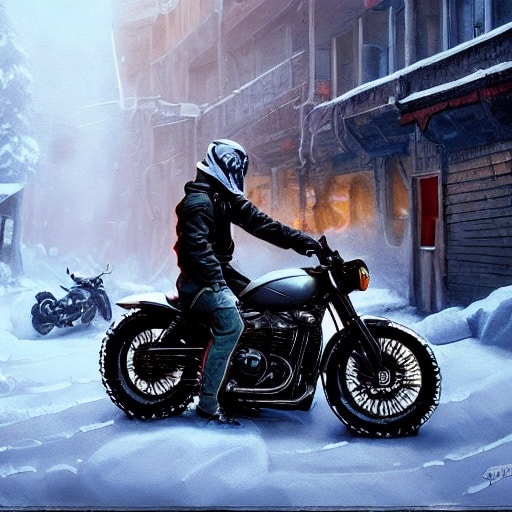Are Mopeds the Surprising Safer Choice Over Motorcycles?
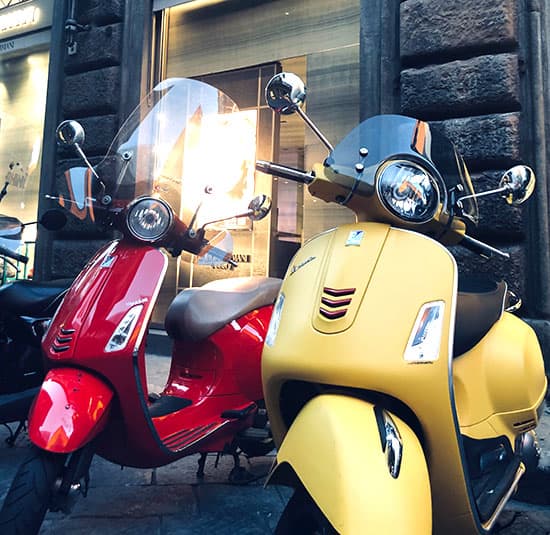
The debate around the safety of mopeds and motorcycles has been a topic of discussion for years. With the growing popularity of these two-wheeled vehicles, it’s essential to understand the risks and benefits associated with each mode of transportation. One question that often arises is, “Are mopeds safer than motorcycles?” Furthermore, how do they compare to motorcycles in terms of safety? In this article I will dive into the key differences between mopeds and motorcycles, analyze safety statistics, evaluate their respective safety features, and provide tips for staying safe on the road. Ultimately, we aim to help you make an informed decision when choosing between a moped and a motorcycle for your transportation needs.
What is a Moped?
Did you know that the term “moped” was coined in 1952 by combining the Swedish words “motor” and “pedaler”? A moped is a compact and lightweight vehicle that can be pedaled and is equipped with a low-powered engine. Originally, a moped referred to a vehicle that had both bicycle pedals and a motorcycle engine, but nowadays, the term is used more broadly to describe any small motorbike that has limited power.
Mopeds are a popular mode of transportation because they offer an economical and efficient way to get around. They are especially useful for short trips or when navigating through heavy traffic. Additionally, mopeds are often subject to less strict licensing requirements compared to full-fledged motorcycles or cars. On public roads, mopeds usually travel at a speed slightly faster than bicycles. So, they are perfect for those who want to avoid the hassle of parking and enjoy the freedom of the open road.
Scooter Vs Moped

Mopeds are generally equipped with a smaller engine with a maximum horsepower of 49 cc, which means they have a top speed of around 30-35 miles per hour. On the other hand, scooters have a larger engine with a power capacity of 50-150 cc, which allows them to reach higher maximum speeds of 50-90 miles per hour.
Another difference between mopeds and scooters is their appearance. Scooters are generally larger and more spacious compared to mopeds. However, both vehicles are designed to offer riders an economical and efficient way to get around, particularly for short trips and in heavy traffic. Whether you choose a moped or a scooter depends on your individual needs and preferences. Mopeds are perfect for those who prefer a slower, more laid-back ride, while scooters are ideal for those who want more power and speed.
Mopeds and Motorcycles
Before diving into the safety debate, lets look at the main differences of moped vs motorcycle. Mopeds are lightweight, low-powered scooters with an engine capacity of 50cc or less. They typically have a top speed of around 30 mph (48 km/h) and are often used for short-distance commuting in urban areas. Also mopeds usually comes in automatic transmission which makes it easier for any inexperienced rider to ride. On the other hand, motorcycles are more powerful and heavier, They come in various engine capacities, styles, and designs, with top speeds significantly higher than mopeds. Motorcycles often have manual transmissions, which makes it quite difficult for inexperienced rider to operate.
Safety Data – Mopeds Safer Than Motorcycles?

There are limited studies that directly compare the safety data of mopeds versus motorcycles in America. However, a fact sheet by the National Highway Traffic Safety Administration (NHTSA) states that motorcycles, mopeds, and other two- or three-wheeled vehicles share similar risks on the road. Additionally, a report by the World Health Organization (WHO) found that deaths among motorcycle riders have increased in low- and middle-income countries, which may include parts of America, and is related to the growth in the number of motorcycles.
In terms of crash risk and severity, a study in Queensland, Australia, compared motorcycles, mopeds, and larger scooters. The study found that the crash rates of motorcycles and mopeds in terms of registered vehicles were similar, but the moped crash rate showed a stronger downward trend. However, it is important to note that this study’s findings may not directly apply to America. It’s crucial to consider other factors, such as rider experience, protective gear, and road conditions, which we’ll discuss later in this article.
It’s also worth noting that mopeds generally travel at lower speeds than motorcycles. Thus, when a moped is involved in an accident, the risk of severe injury or fatality is lower due to the reduced impact force. However, this doesn’t diminish the fact that accidents involving mopeds can still result in severe injuries, especially when riders are not wearing appropriate protective gear.
Safety Features Between Mopeds and Motorcycles
| Safety Features | Mopeds | Motorcycles |
|---|---|---|
| Maneuverability | Mopeds are lightweight and have a compact design, making them easier to maneuver and control in congested areas. | Motorcycles are larger and heavier, but they are still relatively maneuverable and offer good control in most situations. |
| Speed | Mopeds are designed with smaller engines and lower top speeds, which can reduce the likelihood of high-speed collisions and make them more suitable for urban use. | Motorcycles can reach higher speeds than mopeds, but advanced braking systems, traction control, and other safety features can help riders maintain control and avoid accidents. |
| Transmission | Mopeds typically have automatic transmissions, which make them easier to operate and reduce the risk of rider error. | Motorcycles often comes with manual transmissions, which makes it quite difficult for an inexperienced rider to operate. |
| Stability | Mopeds have a lower center of gravity than motorcycles, which makes them more stable and less prone to tipping over. | Motorcycles have a higher center of gravity than mopeds, but advanced suspension systems and other safety features can help improve stability and control. |
| Lighting and Signaling | Mopeds are equipped with basic safety components such as headlights, taillights, and turn signals. | Motorcycles have more substantial and brighter headlights, which make them more visible to other road users, especially in low-light situations. |
| Braking System | Mopeds typically do not have advanced braking systems like anti-lock brakes (ABS), which can prevent wheel lockup during emergency braking situations. | Motorcycles often come equipped with advanced braking systems, including ABS, to improve control and reduce the risk of accidents. |
| Traction Control System | Mopeds do not have traction control systems. | Most new motorcycles have traction control systems built in which could help riders maintain control in difficult road conditions. |
| Suspension System | Mopeds do not have advanced suspension systems, but their design and low weight can provide a comfortable ride. | Motorcycles often come equipped with advanced suspension systems that provide better handling and control in various road conditions. |
| Safety Gear | Mopeds riders often only wear helmet. At the same time mopeds travel significantly lower speed compare to motorcycles. | Motorcycle riders should wear helmets, gloves, jackets, and boots specifically designed to protect them from injuries in the event of an accident. This safety gear can make a big difference in the outcome of an accident. |
Factors Affecting Safety
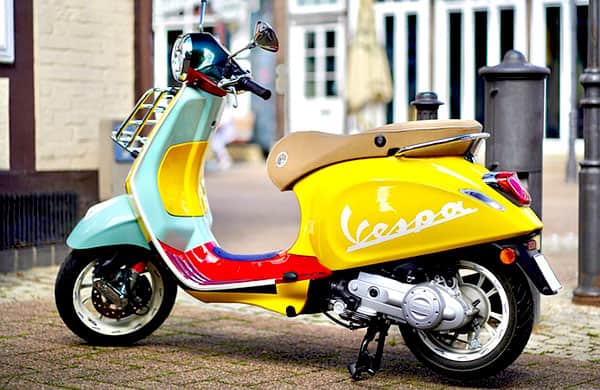
Regardless of you choose moped or motorcycle, one of the most significant factors is the rider’s experience. Inexperienced riders are more prone to making mistakes or engaging in risky behavior, which can increase the likelihood of accidents. Therefore, it’s crucial for new riders to receive proper training and gradually gain experience before attempting to ride in challenging conditions or busy roads.
Another crucial factor in reducing the risk of injury is protective gear. Wearing high-quality protective gear such as helmets, gloves, jackets, and boots can significantly reduce the severity of injuries in case of an accident. This applies to both moped and motorcycle riders, and investing in protective gear is always a wise decision.
Finally, road conditions can also play a significant role in the safety of both mopeds and motorcycles. Riders should be aware of potential hazards such as potholes, debris, and slippery surfaces, and adjust their riding behavior accordingly. It’s crucial to maintain a safe following distance and be prepared for sudden stops or changes in traffic flow. Ultimately, the decision between a moped and a motorcycle should be based on your individual needs, preferences, and abilities. Regardless of which type of vehicle you choose, always prioritize safety by wearing proper protective gear, following traffic laws, and practicing safe riding habits.
FAQs
Which is safer a scooter or a motorcycle?
While both have their risks, scooters are generally considered safer than motorcycles due to their smaller size and lower speeds.
How safe is a moped?
Mopeds can be relatively safe if they are operated correctly and riders wear proper safety gear. However, they are still at risk for accidents on the road.
Are Vespas safer than motorbikes?
Vespas are generally considered safer than motorbikes due to their smaller size and lower speeds. However, it’s important to always wear proper safety gear and practice safe riding habits.
Which is better motorcycle or moped?
It depends on your individual needs and preferences. Mopeds are generally less expensive and easier to operate, but motorcycles offer more power and versatility.
Are mopeds easier to ride than motorcycles?
Yes, mopeds are generally easier to ride than motorcycles due to their smaller size and simpler operation.
What is the top speed of a moped?
The top speed of a moped is typically around 30-35 miles per hour.
How fast does a 50cc moped go?
A 50cc moped typically has a top speed of around 30-35 miles per hour.
Is riding a moped like riding a bike?
Riding a moped is similar to riding a bike, but with the added power of a motor. It’s important to have proper training and safety gear before operating a moped.
- Winter Riding Pants Motorcycle - February 25, 2024
- Europe Motorcycle Road Trips - December 3, 2023
- Motorcycle Slang and Terminology - November 28, 2023


